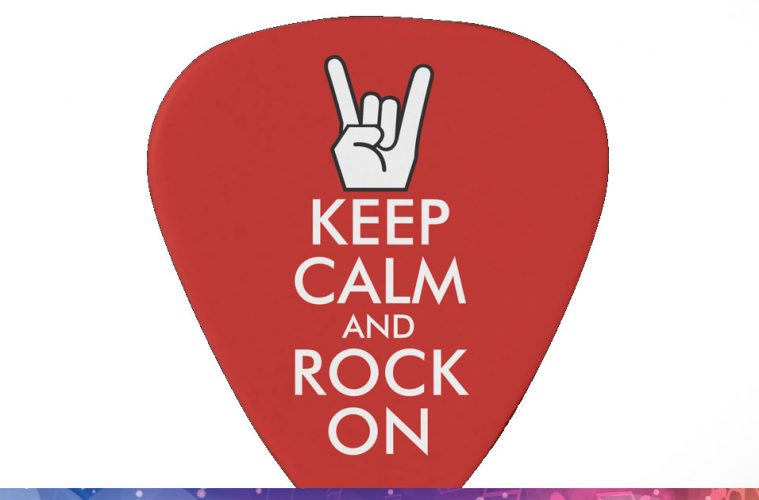We often publicize the many areas of innovation in the MI industry, whether it’s pro audio, DJ products, new guitar technologies and more. But certainly not to be outdone are advancements in both bags/cases and accessories, just a few of the things we asked eight manufacturers for in this all-encompassing story. You will also receive advice on how to sell these products and much more. Since we asked different questions of bags/cases experts and accessories experts, you will see the story separated in that manner. Heeding the call to contribute were Gator Cases, TKL Products, On-Stage, Mapex/Majestic, ProX, The Cavanaugh Co., Kyser Musical Products and Roland. Enjoy.
As an icebreaker, the Music & Sound Retailer first looked at what bag/case manufacturers value the most, no matter if they produce a soft case or a hard case. Are durability, TSA compliance and actual design/look of the bag/case most important?

TKL Vectra MC Alumin-X
“There are many factors we consider whenever we set out to develop a new hard or soft case,” responded Tom Dougherty, co-founder and CEO, TKL Products Corp. “The answers to these questions are really what determine the design of the case. Among these are: What instrument are we protecting? Who will be using the case, student or professional, part-time or touring/recording player? What levels of protection and durability are required? What design features are required for functionality? What design features are desired from an aesthetic and user-comfort perspective? Price point is one factor we try not to be influenced by. At TKL, our primary goal is to make the best possible case for every musician and musical situation, regardless of price.”
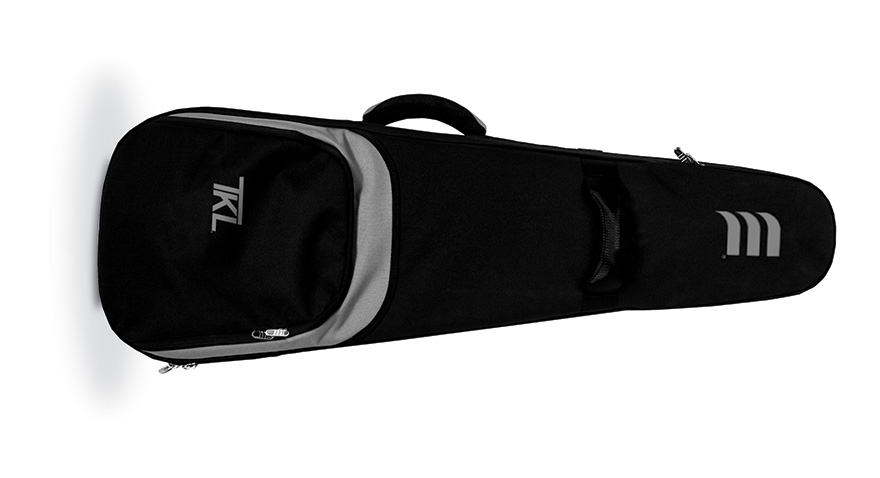
TKL Vectra IPX
“Gator’s success has always been driven by solving a problem first,” said Rob McCoy, director of brand management at Gator Cases. “All aspects of the durability, design and look start from what problem is being solved. When Gator first started, the design and look were not as much as an option as quality and concept. We were innovative and quick to market with quality products, so the market was willing to overlook the style and look of the bag or case. Now that we have grown, we have designers and engineers that can help us to realize fully rounded products.”
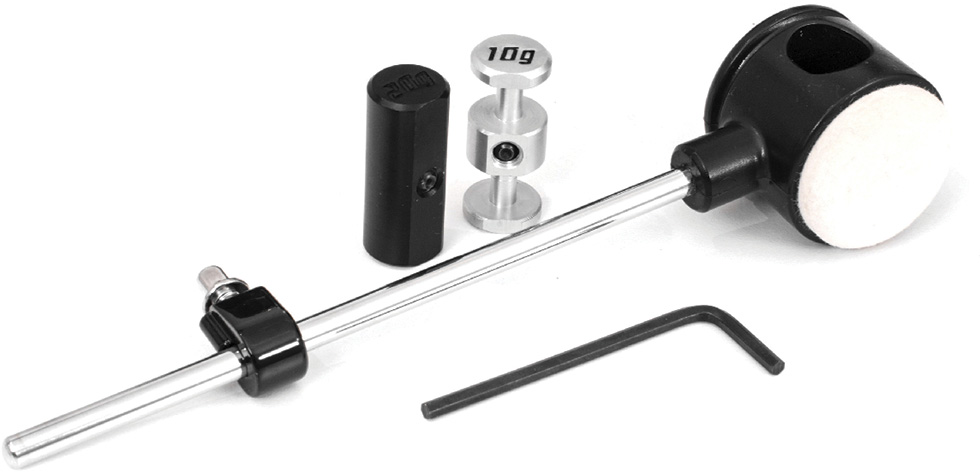
Mapex Bass Drum Beater
“For the Majestic Mallet Instrument Bar Bag, the two priorities in the design are functionality and strength,” added Jeff Mulvihill, product manager for Mapex and Majestic percussion. “Mallet instrument bar sets are both awkward and heavy to move around. The usual practice involves rolling them up and stashing them in some sort of duffle bag. This dedicated, durable case provides a functioning case for the specific, dedicated product.”
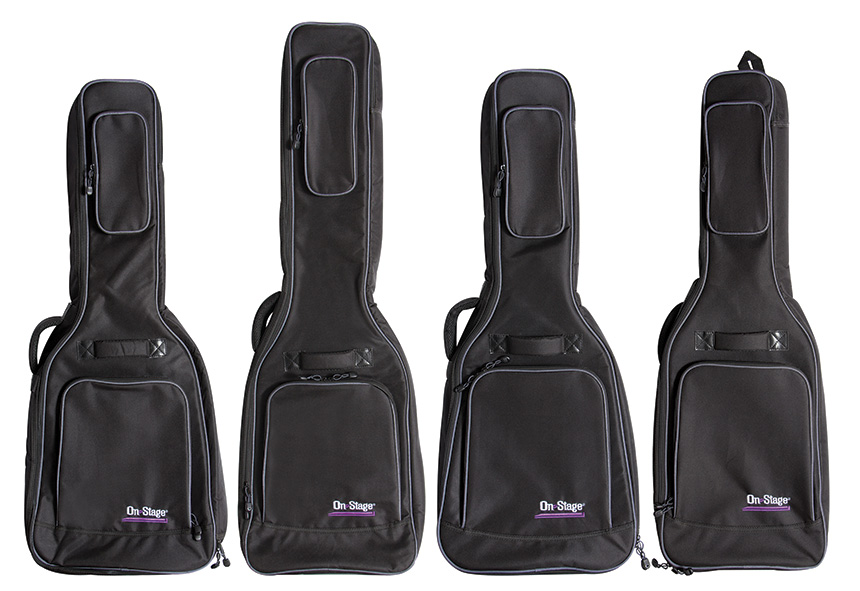
“All of those things are certainly important,” answered Jeremy Payne, On-Stage brand director and national accounts manager. “It really depends on what kind of case or bag you’re designing. You can really go overboard with features and benefits, and then end up with a price point that doesn’t make sense for the target audience you’re going after. Conversely, you can skimp out on essential features like padding, zippers, handles, etc., and at any price point, that sort of thing isn’t acceptable. To generalize things though, the zippers, handles and straps all need to be beefed up a bit; we don’t want people picking up a guitar gig bag, throwing it over their shoulder, and the strap rips off. That’s just unacceptable.
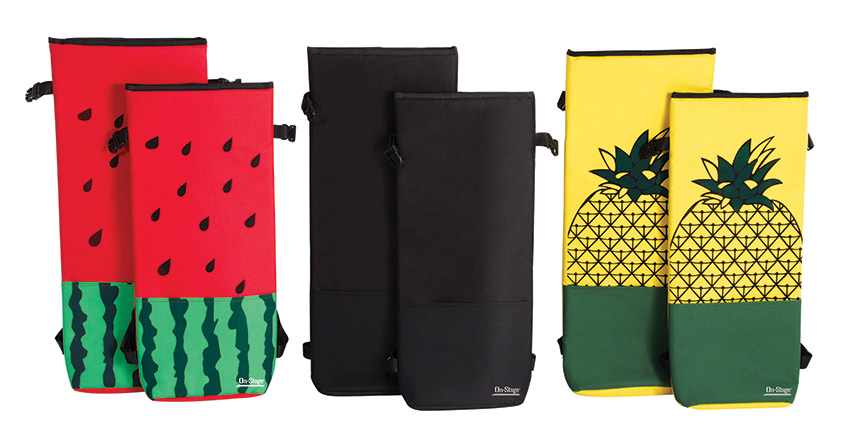
On-Stage Uke Bags
“We also are proud to say we are always very attentive and ahead of the curve with compliancy, specifically on the safety end of things,” Payne added. “When California Proposition 65 came to our attention a few years back, we went above and beyond the minimum requirements and reformulated all of our products to be free of any of the listed, potentially harmful chemicals. This was a really tough process, because some of those chemicals were in the products to help meet other compliancy laws, like fire retardancy. Due diligence costs some money, but it means everything in making sure your product is as safe as it is functional, well built, etc.”
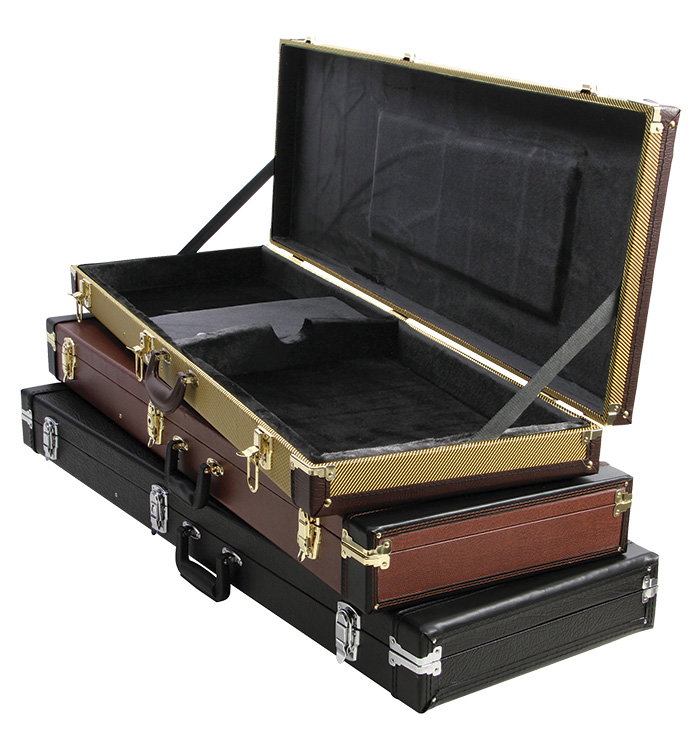
On-Stage GCE6000 Electric Guitar Cases
“‘Quality without Compromise’ is the standard we follow when it comes to designing ProX cases and bags,” relayed Gabriel Menashe, president, ProX Live Performance Gear/Xstatic Pro Lighting/Uno Laser. “Our main priority is to produce well-rounded, quality cases and bags that will protect your gear at all times during transit and storage. Utilizing our signature series plywood, ProX cases can withstand a lot more than the usual wear and tear. Our sleek digital honeycomb exterior design adds an extra layer of style to our case design, giving our loyal ProX clients a touch of professionalism to their setup and presentation. Another aspect that is very important is making transporting your gear easier. Our Gig Ready cases come equipped with low-profile wheels and high-quality, recessed handles, which makes transporting your gear very easy and effortless. With ProX you will get more value for your investment. With our team focusing on durability, design and ease of transport, we hope to deliver.”

Next, we looked at some of the newest trends in the bag/case segment of MI.
“Great protection in a compact, minimalist design,” responded McCoy. “The musical instruments that people would need to travel with have not changed too much in size or shape. However, all of the peripherals that are used with, and travel with, the instrument have gotten smaller. That certainly does not mean less expensive. New materials are being introduced into the market every day that help protect with less. Travel restrictions and luggage fees have really made the modern musician rethink how they get around, and they have to do it in style. With that, we look forward to the challenges that tomorrow’s market may bring.”
“We are finding that lighter cases offer very desirable benefits to the consumer and to our retailer partners. From the consumer’s point of view, lugging a nine-pound guitar in a 12-pound case is just a burden,” stated Payne. “Our Polyfoam cases are half the weight of our wood cases and arguably offer just as much, if not more, protection. And since they are cloth, we can sew backpack straps onto these cases, which make transporting them easier and allow players to carry other gear in their arms for fewer trips to and from their car to the venue, studio, rehearsal hall, etc.
“From a business perspective, freight is a huge deal, whether you’re doing ecommerce or brick-and-mortar sales,” continued Payne. “Since these Polyfoam cases are lighter, they cost less for us to ship, less for the retailer to ship and are, hence, less expensive for the consumer to buy. There is no such thing as free freight. It cuts into someone’s margin, and the best way to keep everyone profitable and happy is to make things smaller and/
or lighter.”
“We find that musicians generally want cases with the highest levels of protection and reliability and the least possible weight,” relayed Dougherty. “These are features that never go out of style. As far as some of the more recent trends, more and more players also want something stylish. Most of the cases we sell are classic black, but we’ve added Glacier White, Alumin-X and several other exclusive color options to our Concept MC line of molded cases. This makes them a bit more fashionable for school music programs, as well as today’s top artists. However, since we manufacture a wide range of wood, molded, reinforced and soft cases — and since we’re constantly updating and upgrading the features on all of them — a TKL case is timeless, and always in style. Another recent development has been our Vectra MC and IPX hard and soft cases. The proprietary Vectra shape is sleek, lightweight and ergonomic, exceptionally protective, and durable.”
Of course, bags/cases have to hold something. Hence, how reliant are bag/case manufacturers upon the products housed inside?
“Obviously, it is easiest to sell a ukulele case when someone is buying a ukulele. It is an add-on that you know they need when they are buying the instrument,” Payne responded. “However, if you don’t sell ukes or are experiencing a dip in uke sales, that doesn’t mean you can’t sell the case on its own. Like any sale, you need to learn your customer’s needs. Ask probing questions to discover what they play and what gear they currently have. ‘Oh, you play ukulele? Tell me, do you like carrying your uke around in a bag or case more? Oh, you don’t have either? Dude, you need to protect your instrument, let me show you this bag. It is only $10….’ And so on. Also keep in mind that times get tough for people. Sometimes they would really like a new guitar, but don’t have the money. But, they might have enough to make their current instrument work better for them, and a nicer bag or case, like any accessory, can do just that.”
“Yes, the performance of the actual gear being housed in the case can affect the demand for certain cases and bags,” said Menashe. “We have started creating hybrid/universal cases that can house different models and brands. Give the buyer even more value, as they will not have to purchase another case, even when they change their equipment.”
“The fretted, wind and string markets are different from other markets because those instruments generally come with a case (which, by the way, is often manufactured by TKL through our OEM division),” said Dougherty. “In those circumstances, the retailer can focus on selling an after-market upgrade or a replacement. In the drum, percussion, and light and sound markets, where the instruments/products don’t include cases, the opportunity to upsell cases with an original or return sale is even better. The reality is that the customer may want the least-expensive option, rather than the case that will best protect their new investment. The retailer therefore has a responsibility to educate the customer that properly protecting the instrument is an investment that is as important as the instrument itself. From being in this industry for 33-plus years, we know that there are cycles in the music business, and that peaks and valleys are not sudden movements, but follow trends. For instance, electric guitars are currently making a comeback, and acoustics are slowing a bit. We continually monitor trends and constantly dialog with retailers to ensure we’re working together to keep their inventory in line with demand — for today and tomorrow. Because so much of our products are made in the United States and Canada, we can promptly respond to any peaks and valleys that develop.”
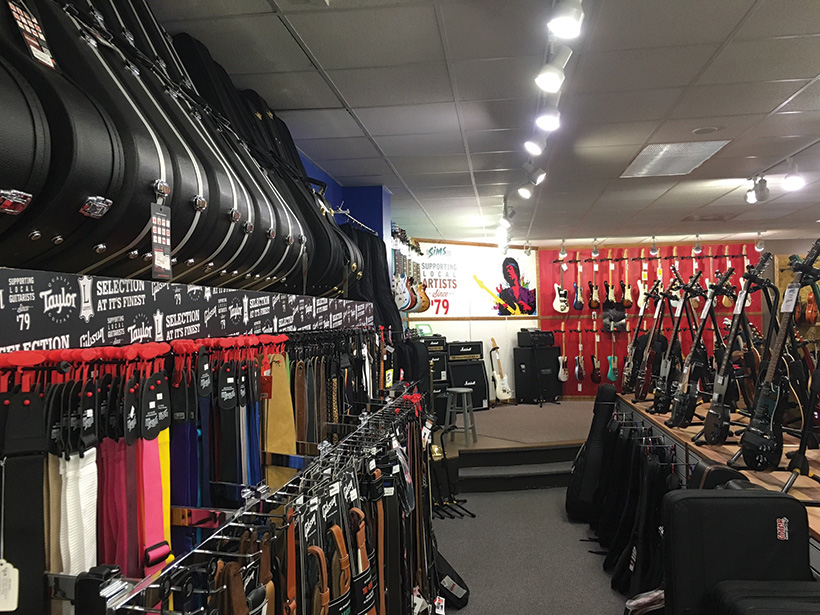
“Many times cases and bags are purchased at different times from the core instruments,” answered Rob Garofala, national sales manager for Gator. “This occurs for a variety of reasons. Example: Many beginner Guitar Players will not purchase a bag or case for their instrument until they start playing out. This is oftentimes many months to years after the initial instrument is purchased. As customer’s applications change, their needs change. Most people will not purchase a flight case until they actually need to fly with their instrument. So, from what we have seen, case and bag sales are not reliant on the sale of the core instrument, although at the initial time of purchase is always a good time to discuss a case purchase with a customer.”
Mulvihill said the answer to the question is both “yes” and “no.” “Yes, we certainly rely on our retail partners to sell instruments for which cases are needed, but there is also a certain segment of musicians that have had instruments for a very long time, or have vintage instruments that need to be protected. In the case of this new Majestic Mallet Instrument Bar Bag, it will work perfectly for newly purchased marimbas, vibraphones or xylophones of any brand, or prized vintage instruments valued by seasoned orchestral players and other gigging pros.”
A manufacturer making a great bag/case is definitely great, but it’s only half the battle. What’s the best way for MI retailers to display a bag/case to make sure customers have them on top of mind when in the store?
“Mallet instruments and associated cases are rarely sold from a sales floor. We rely on digital marketing and dealer training to get the message across to the public on a product like this,” said Mulvihill.
“Every store has a different layout and available space, so there is really no best way to display cases and bags that will work for everybody,” responded Garofala. “The most important thing is that the cases and bags are actually on display and not just in the back. It is a proven fact that cases (and all accessories) sell better when they are displayed visibly rather than available on demand only. Customers shop with their eyes, so if cases and bags are not on display, many customers will assume that they are not available. Self-service is a popular trend in retail, so case and bag displays tend to be most effective when the customer can actually touch the product and look inside, as opposed to seeing a case up on the wall and out of reach. In my recent travels, I have seen some great case displays.”
“Dealers can make a very good profit selling cases, but, due to poor merchandising and sales efforts, many sell fewer than they could,” stated Dougherty. “All too often, cases and bags are stuck in a dusty corner of the shop or in the warehouse. I have seen good use of clothing hooks and racks for displaying soft cases on the walls and floor of stores. For online merchandising, cases should be suggested along with all instrument purchases. I suggest the dealer have a reasonable amount of better-quality guitar cases displayed near the guitars. This will ensure that the customer sees and considers buying a case, whether for a new, in-store vintage or used guitar, or as a replacement for an existing instrument. Placing the cases near the instruments is also a solid reminder for the salesperson to ask for the aftermarket sale.”
“The best way to display our cases and bags is to create an actual real-time setup with the actual instrument in the case,” relayed Menashe. “When customers see the instrument and the case together, it becomes one unit and instills safety and peace of mind knowing your expensive equipment is safe
and sound.”
“Step one is doing just that, display them! When I was an MI retail store manager, I went back and forth on whether we kept bags and cases on the sales floor, or just in the back, when we sold an instrument,” said Payne. “Step away from everything you know, and think about it in simple terms: Would you buy something you couldn’t see in a store? Or a photo of online? These items offer high margin and a decent sales ticket size, so you need to display them as well, if not better than, the instruments they house. Shameless plug: On-Stage just came out with guitar case racks to help stores display cases better. I wish these things existed while I was in retail!”
To expand on this question, we asked manufacturers what advice they can offer MI retailers on how to best sell bags/cases.
“To maximize accessory sales and, in particular, cases and bags, it is key to have well-trained staff on the gear and what accessories work best with that gear for each player’s mission,” said Crystal Morris, CEO of Gator. “It’s a great service to your customers, when a well-trained store staff can help educate and guide them in finding the right solution for their needs and preferences. To help with this guidance process, we have a fantastic tool on our website called the Case Advisor that we keep extremely up to date with the latest gear on the market and what case matches marry up with them.”
“We all need protection,” asserted Menashe. “When selling high-priced items, such as DJ controllers, mixing board consoles, speaker cabinets and monitors, asking if you need a case after should be second nature. Most customers realize it’s a much-needed investment to protect their initial investment and keep them profitable. As you know, if your gear is broken, then you make no money.”
“In addition to explaining the short- and long-term benefits of protecting their investment, first, offer the customer highly respected, reliable brands that can provide solid, enduring instrument protection, and, second, highlight the brand’s integrity, warranty, customer service, quality, features, strength, etc. Seek to completely understand the customer’s needs and suggest the most appropriate case or bag solutions. This will help your customer make an informed decision and will help you create a satisfied, loyal customer,” responded Dougherty.
“People like convenience, style and consistency when it comes to bags and cases,” noted Payne. “Carry bag/case products that make their lives easier. Look into carrying bags designed to hold stands, cables, mics, headphones, etc. These aren’t always the most obvious case/bag add-ons, but the struggle is real when you don’t have an easy-to-transport and safe place for your gear to live. Playing an instrument is an intimate and fashionable thing. Offer your customers a stylish way to carry their gear, so they can be proud before they even pull it out of the case. Don’t just carry the standard black case. Get some interesting finishes, designs, colors, etc., and let your customer express their personal style. Finally, if you’re going to carry one or more brands of cases/bags, get a good variety of their line. Look for brands that offer consistent quality, features, looks, etc., across the line. When your customer sees someone with a really cool acoustic guitar case with backpack straps, and she wants one for her bass guitar, you had better have the complete lineup to meet her needs.”
Lastly, we asked the manufacturers what are some new technological advances we may see in bags/cases in the future?
“From our designs and materials to our proprietary manufacturing processes, TKL has always been on the leading edge of case innovation,” responded Dougherty. “We will soon be releasing the industry’s first digitally enhanced, highly protective, musician-interactive SmartCases. TKL SmartCases feature our TKL Labs’ Safe & Sound TIPS (Total Instrument Protection System), which delivers Bluetooth instrument monitoring and protection to the musical instrument owner through mobile devices.”
“This is an interesting question,” stated Payne. “I think the economical bag and case market is pretty saturated at this point, so I don’t think we’ll see a ton of change there. I do see a lot more of the higher-end, customizable products coming into the market in all categories, so I think we could see this in the case and bag category for sure. Everyone has a specific and unique set of needs, and if those needs can be customized on the fly with quick turnaround times, I think that could become a really attractive option to consumers. Heck, I customized a baby bib the other day for a friend; why can’t I customize my banjo case?”
“I see cases and bags getting lighter,” concluded Menashe. “So, researching and studying new material to achieve this goal is crucial. People also want a case that can do it all. They do not want to haul 10 cases. They would rather condense their load into a few cases and set up as quickly as possible. One case that can hold multiple pieces of gear is very valuable. Do more with less is what I see in the future.”
Accessories Update
For accessories, the Retailer first dove into the question: What are some of the newest trends in accessories (regarding your products or the industry in general)?
Susan Cavanaugh, executive vice president of The Cavanaugh Co., responded, “Simple technology products, such as tuners, or other music-related gadgets that will draw attention for an impulse purchase that are priced under $10. Strings are under $5.”
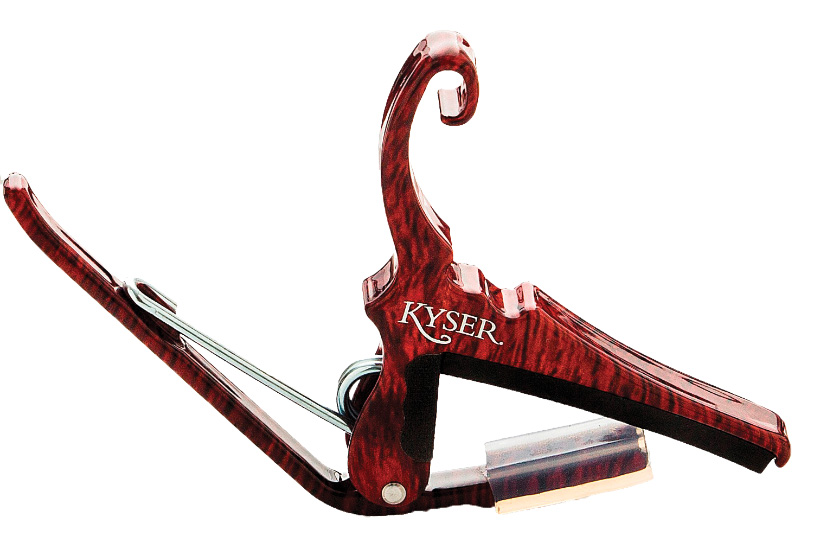
“Some of the newest trends are accessories that attempt to make learning an instrument both easier and more personal,” stated Max Lintner, executive manager of business development, Kyser Musical Products. “Keeping new musicians interested and engaged in learning how to play, while allowing them to sound good quickly, should be top of mind. If a new player starts sounding good quickly, there’s a better chance they’ll stick with it. Items like capos, tuners, metronomes and new strings all enhance how a player sounds and can have a very positive effect. Coupling that with having a wide variety of personalization accessories — like straps of all colors and styles and capos in multiple colors — will allow the new player to make their guitar an extension of their personality.”
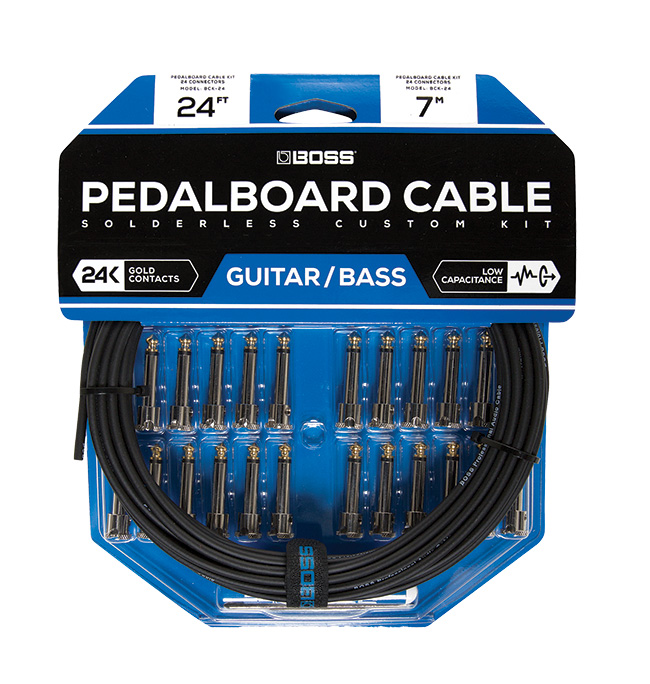
“With a fast-growing modernization, the marketplace keeps evolving toward more ‘digitalized’ and modern music,” answered Niko Spanos, vice president of the product development accessories division at Roland Corp. “Our accessories are designed to follow this rising trend by focusing on innovation and quality within this space, and to offer consumers a product with the most features at the most competitive price. For instance, our BOSS and Roland instrument and mic cables, plus new products, like our braided USB cables, produce premium, clean sound and tone to support the musicians who are also evolving.”
Next, we dipped into whether accessory sales relied on MI retailers selling the related product/instrument, and the various ways to counteract peaks and valleys in sales of specific instruments or products.
“Absolutely, yes,” asserted Lintner. “People still want to be able to touch and feel the instruments and the accessories prior to buying. For Kyser, we follow the guitar trends. Acoustic sales are strong, so we cater new products around that, like our newest capos that are in Rosewood and Maple finish.”
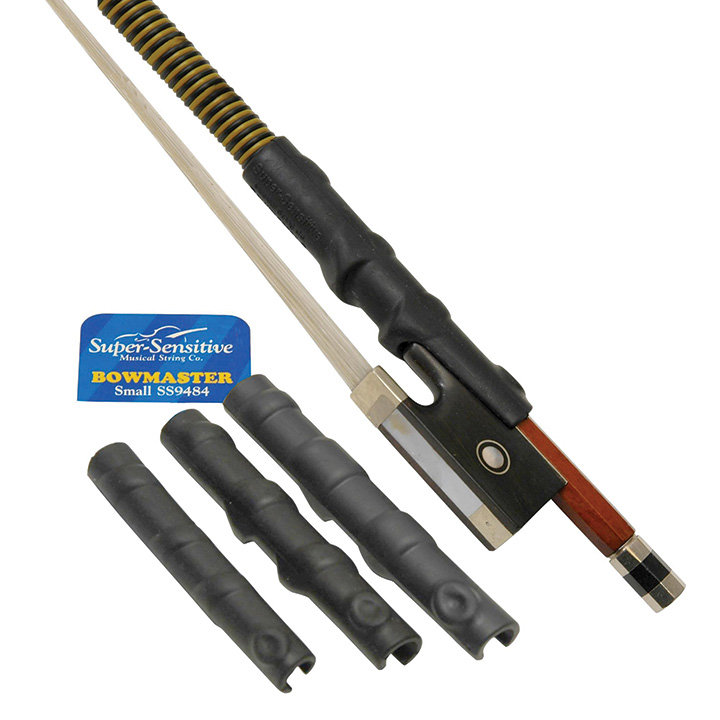
“Yes, accessories are reliant on retailers selling related product/instruments,” responded Cavanaugh. “Ways to counteract peaks and valleys in sales are: local musician appreciation day (LMAD); clinics, like How to Play Guitar, How to Compose Music, etc.; a Battle of the Bands contest at the store or parking lot; guitar (or other instrument) giveaway to local bands; free group lesson on a weekend (an example is a free group lesson to learn to play the ukulele); and group jam/drum circle at your store.”
How about the best ways MI retailers can display accessory products to ensure they are seen by customers?
“A self-standing POP (point-of-purchase) kiosk throughout the store,” confirmed Cavanaugh.
“The best way for our dealers to let the consumer know about and sell new accessory products is to place them strategically next to the core product they’ll be used with. This insures a better chance of attachment, as well as educating the consumer about products they may not otherwise know about,” said Spanos. “This strategy is one of the main reasons the accessory market wasn’t as affected by the recent economic downturn. During this period of time, accessory sales rose as the sales of core items fell. Dealers can both counteract the peaks and valleys of MI sales and service their customers better by offering a wider array of accessory products, while also making them easier for their customers to find.”
“Sometimes, countertop displays get a bad rap by cluttering things up, but that’s really where accessory sales occur,” relayed Lintner. “Change out the countertop displays every month (or even every week) until you find out what’s moving and what’s not.”
“Accessories cannot be behind the counter. Remove the majority of the counter tops,” stated Cavanaugh. “Place a small counter in front of the store, so a trained associate can greet customers as they enter the store and also ring them up at the register. Also, add one or two more bar-height, self-standing tables that you can display in case you need to demonstrate products. The self-standing tables can also have product hanging on them.”
Regarding any additional advice for MI retailers, Lintner recommended keeping a wide variety of colors and styles, and enough selection so customers can feel like they bought something unique.
To conclude, we asked accessories manufacturers to take out their figurative crystal balls. What are some new technological advances we may see in accessories in the future?
“Following the trends is a requirement in the accessories world, whether it be a fashion trend that dictates what sort of guitar straps are in style or accessories that work directly with a piece of technology. And, as music tech expands, expect to see an expansion in power- and data-based accessory products,” said Spanos.
“I believe this will be anything related to virtual reality,” responded Cavanaugh.
“We should watch for accessories that tie into smartphones,” concluded Lintner. “Any accessory that allows the player to enhance their ability while also allowing them to share their music on social media will be popular in this world of sharing and ‘living out loud.’”


